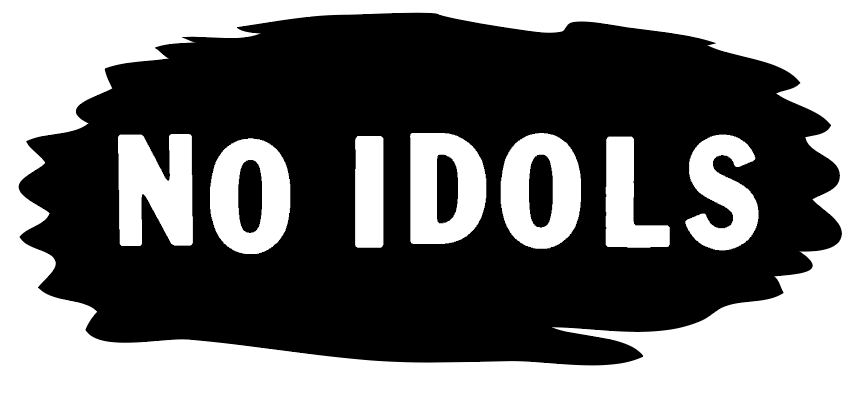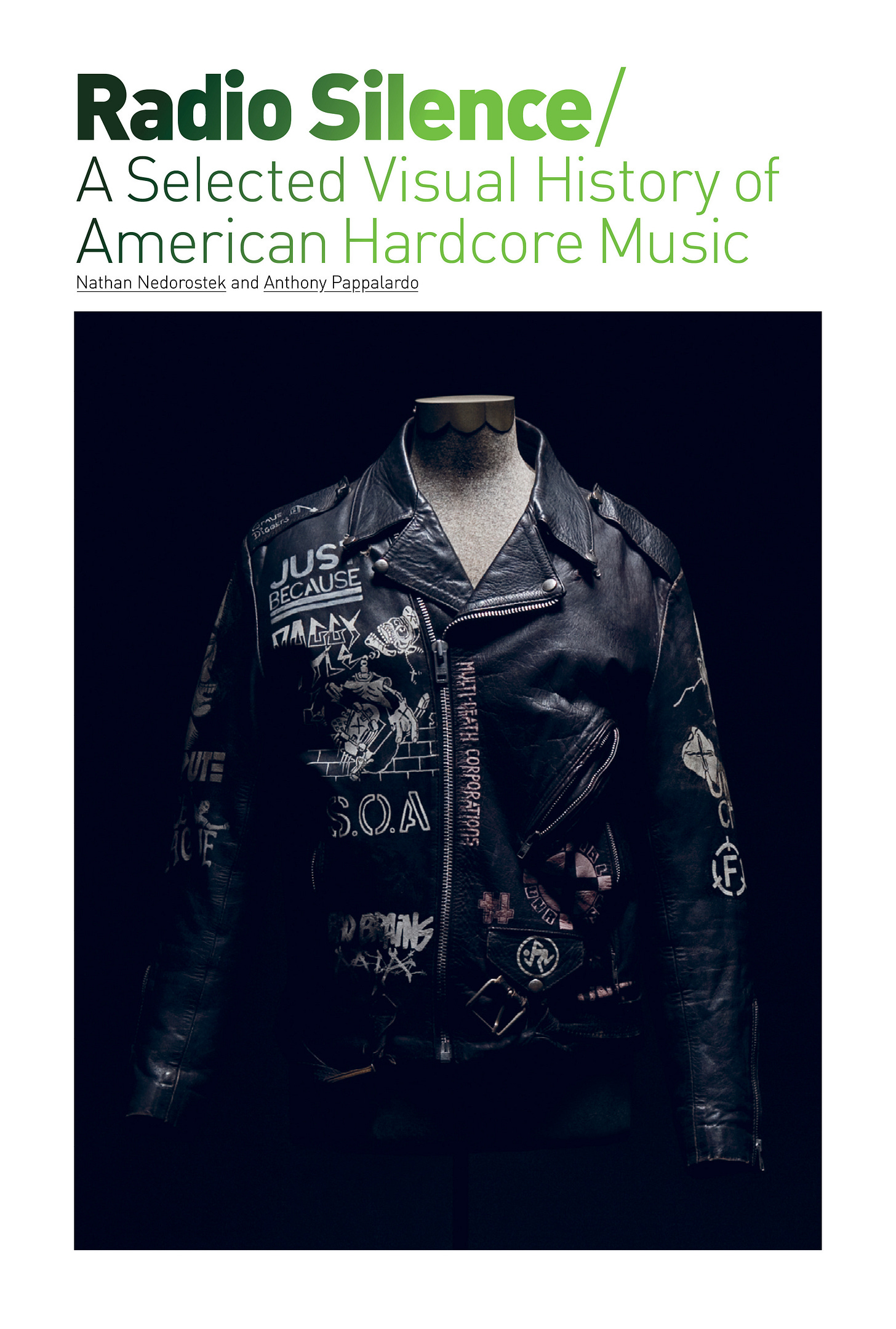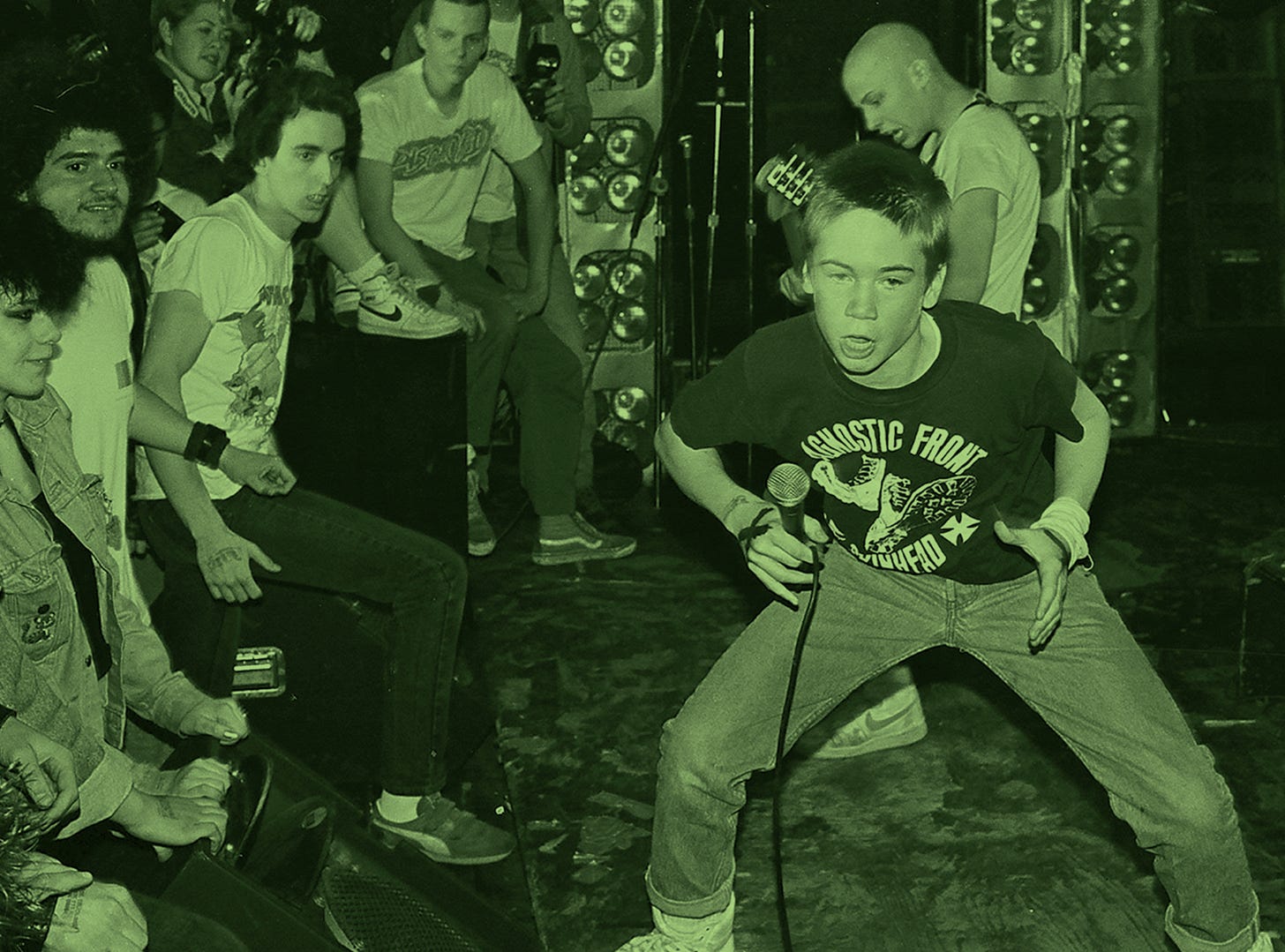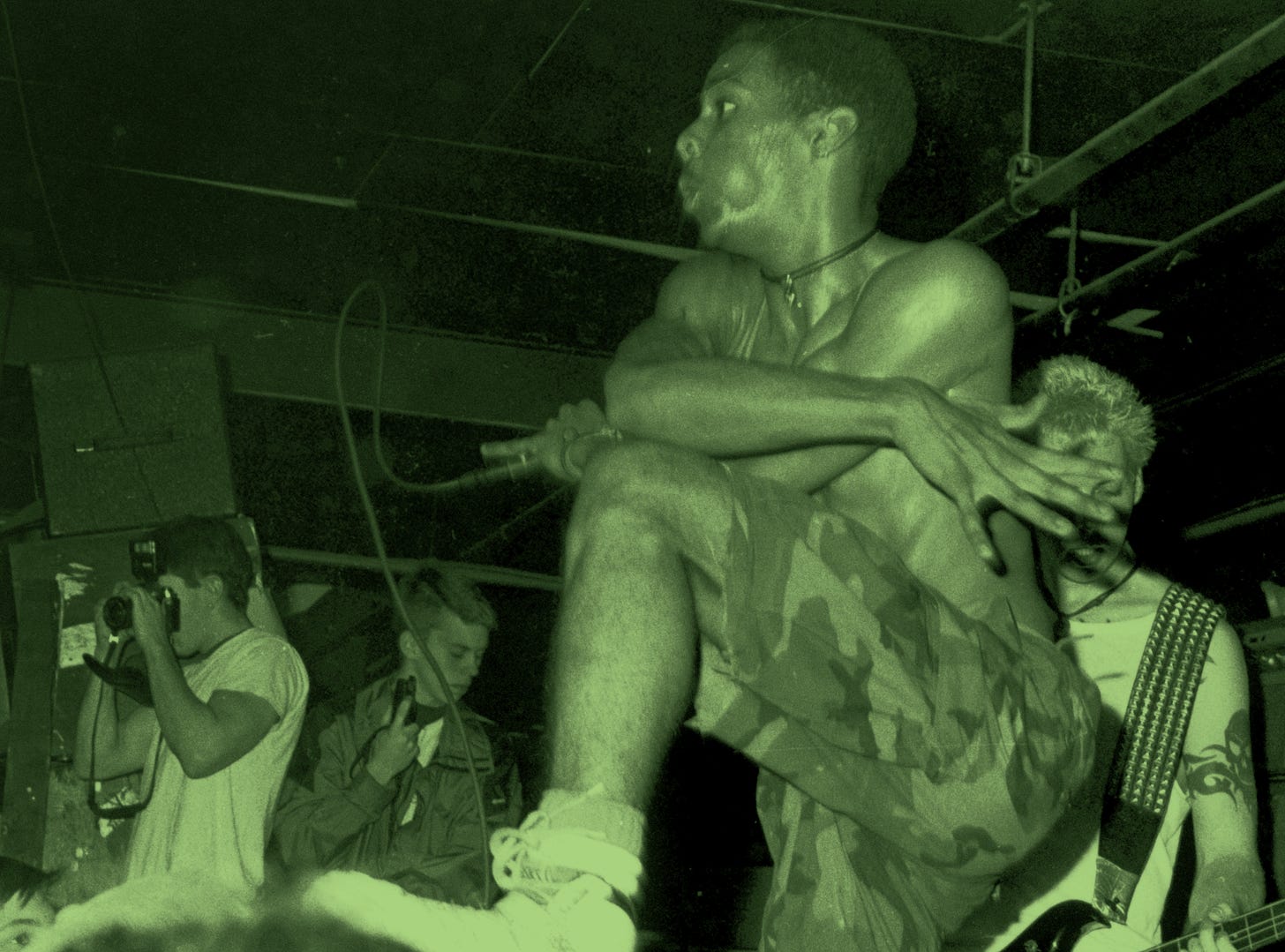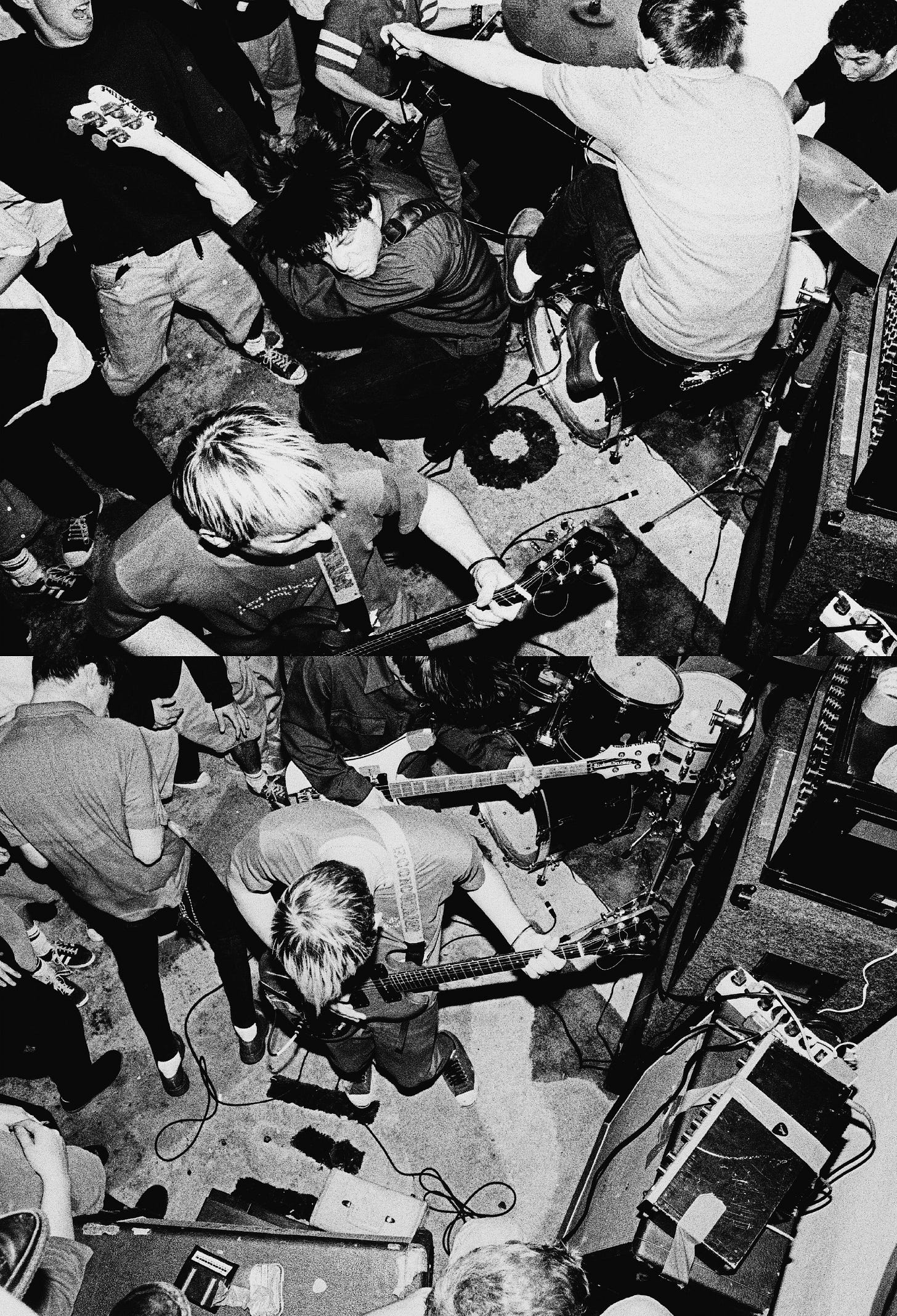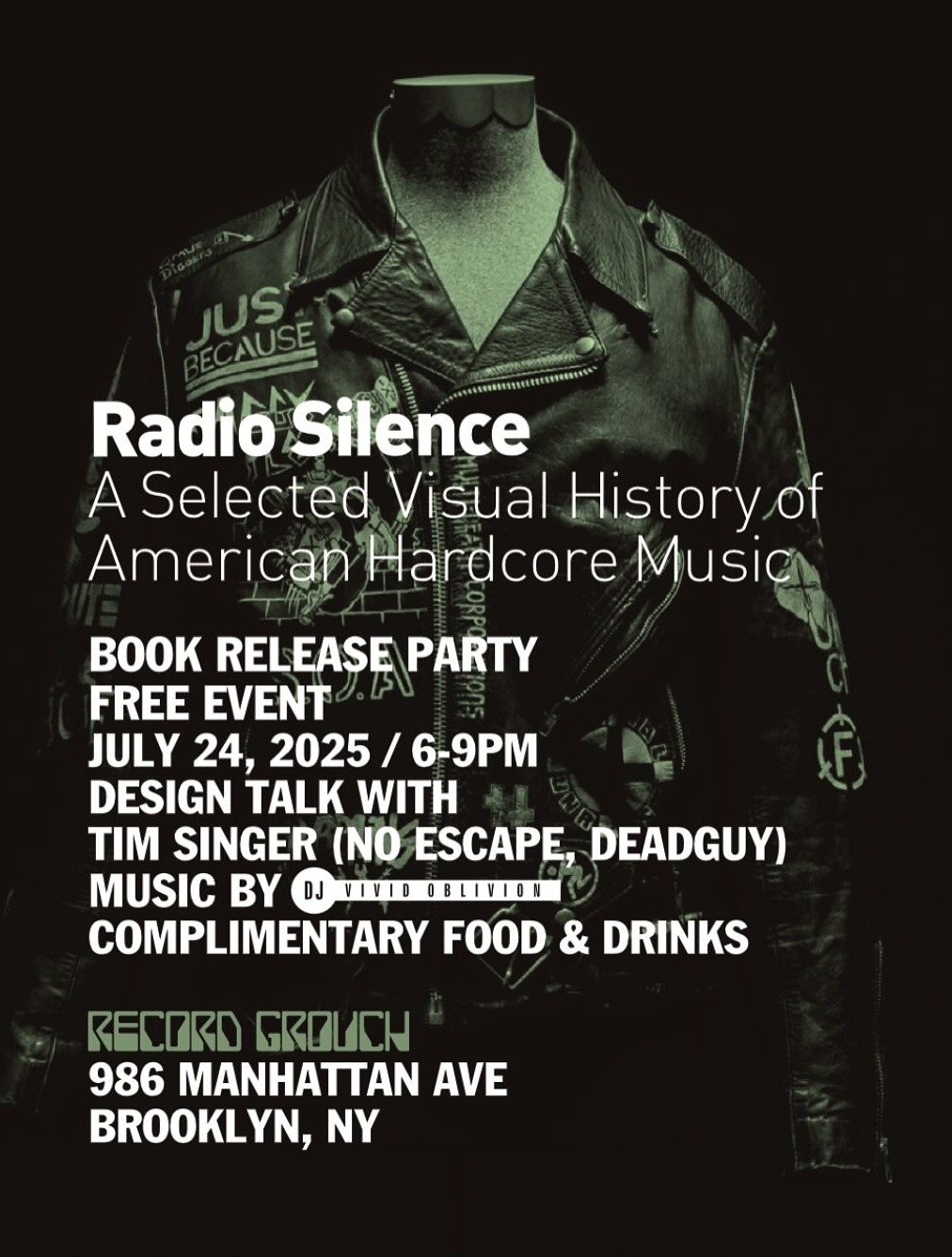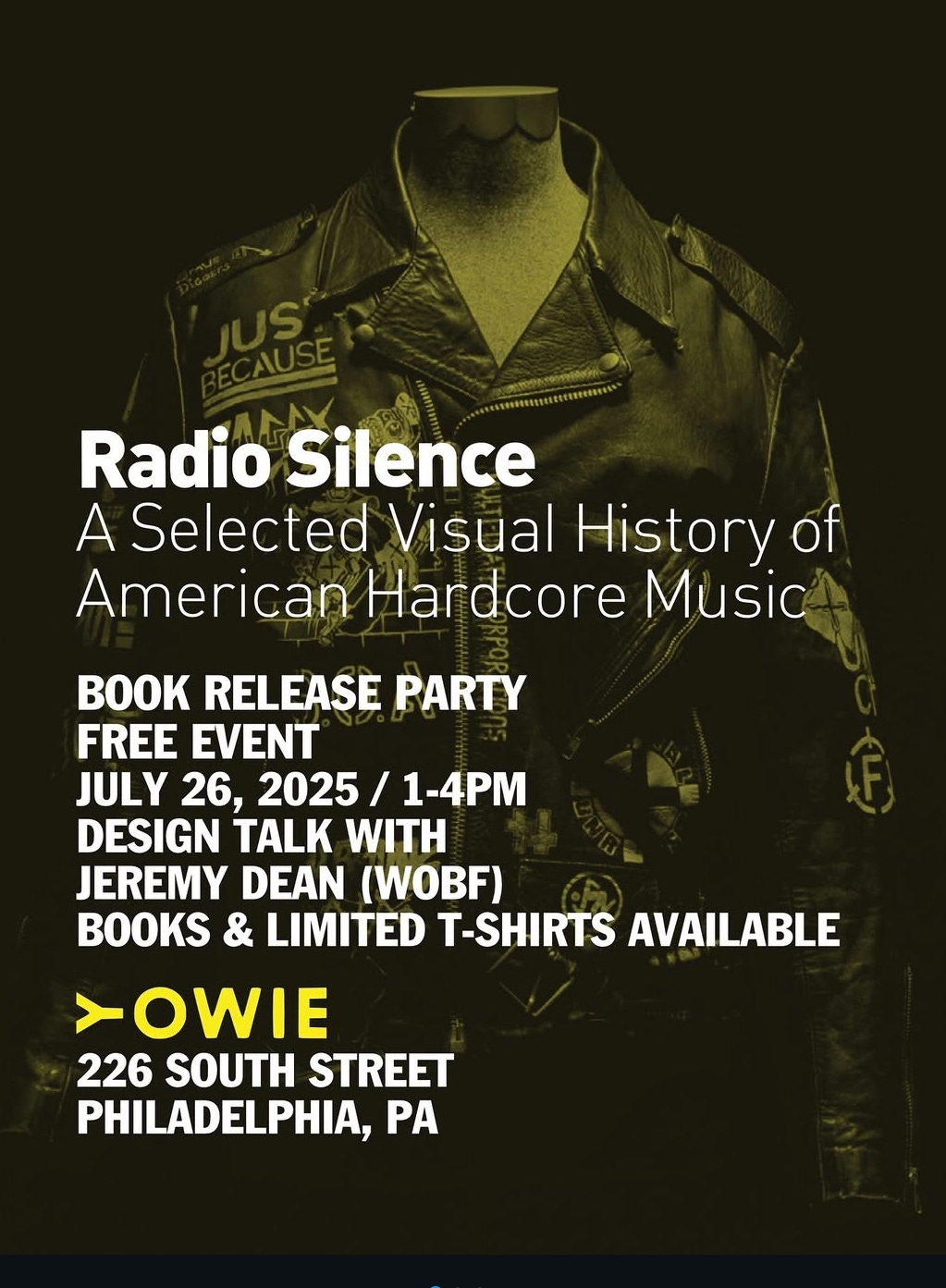Way back in 2008, Anthony Pappalardo and Nathan Nedorostek published Radio Silence, the first book to seriously access American Hardcore punk from the angle of layout and design.
Out of print for years through its initial publisher of MTV Press, a new edition with an added 34 pages is now available through Revelation Records To celebrate the relaunch, Anthony and Nathan are doing events in Brooklyn on July 24 and Philadelphia on July 26th.
I recently sent over some questions to Anthony asking about the reprint of the book and here’s what he had to say.
Crippled Youth Photo: JJ Gonson
Why the reprint of the book now? How do you think the landscape of HC/punk books has changed since it was first published?
Anthony Pappalardo: We had a long run of the book being in print, but as MTV dissolved their publishing arm, the rights reverted to us. Nathan and I wanted to reintroduce Radio Silence to people who may not have been aware of its existence, especially as a design book.
In a world where screens have become an extension of our personalities, I like how a book takes you out of the digital slot machine. Finding them in the wild is cool too. Fuck, I just described what a book is.
When we interviewed people for the book back in 2008 and before, I don’t want to say we got push back, but there was a lot of ‘So why are you doing this book, there are already some books on the topic?’ I always thought that was trippy. It’s not like you go to a bookstore and there are three books about the moon or some shit. People wanted to know what we were doing differently from American Hardcore or Our Band Could Be Your Life. That made sense.
The biggest change I see is that not only are there more titles, but the ease of publishing and crowdfunding has led to a wider range of books about hardcore. Sometimes I can be critical, but I’d rather see these titles exist than not, especially knowing that books about an overlooked scene or band are so special to the people who connect with them. A store could have a Hardcore section. That was unimaginable then and it’s still surreal to me.
What were some of the images/content you added for the second edition? Why did you think it was relevant now and maybe why wasn’t included the first time around?
Anthony: Even after the book was published, we’d go through all the things we had scans and photos of and wish they could have made the cut. The images in the book are maybe 5% of the archive we built. The hard part is separating what you like about an image from the value it has to the narrative. I love Collapse, but what do you cut to include them?
Even though we weren’t trying to “fix” the original version, we put a lot of thought into what we added and why. Sometimes it was easy: we had to make a hard decision. We thought some of these photos would add to the story and most of them were in earlier edits. Nathan came up with the idea for how to handle it visually and I really dig the new pages.
The hard part was not reacting to the criticism of the earlier editions and being like “Oh, you wanted more Infest? Boom, check it out.”
*We didn’t have any Infest images strong enough to include anyway…
There really was no social media except MySpace at the time of the book's first publication. So what are the advantages and disadvantages of getting the word out about the book using these platforms in the present day?
Anthony: The book certainly didn’t have a digital footprint which can suck because that’s all that matters (mostly) and it feels like it never happened.
However, (quickly Googles Rick Rubin quotes on creativity) “what others overlook can become the biggest weapon in your creative arsenal.” OK, I made that up, but we thought the fact that Radio Silence came out in primitive social media purgatory was an opportunity to reboot it.
I see people constantly re-sharing dusty memes or news items from seven years ago as if they’re hipping you to some new shit, why not re-share the book?
But algorithms suck. This isn’t a “rage” book and even “going viral” is antiquated. We’re so dug into social media that it’s the first place you find out about anything and there’s so much many things being announced, released, re-released, made, proposed… what happened to the Big Boys doc? It’s overwhelming.
So yeah, it’s easier now, but there’s so much you have to cut through that we decided to lay low and lean in once the book was about to land on US shores. Maybe that was a bad idea?
It’s fun to use Instagram as a medium. What we put out on social feels connected to the book’s aesthetics and is (hopefully) thoughtful.
Absolution Photo: Joe Snow
Do you think the audience for the book has widened since the first publication? Do you think a younger audience into Haywire or Turnstile has an interest in 80s or 90s Hardcore?
Anthony: It’s hard to tell. Is hardcore a bigger thing? 100%. Does that translate to a larger readership? Maybe? OK, probably not.
I was looking at the book the other day and realized it’s an unconventional format. It’s book ended by essays but the content is kind of like an Instagram feed in that it’s image-based with snappy captions.
Fuck, we should have just pitched it on the one-sheet as some tech prophecy in print or something.
As far as the question about younger audiences, because most of the images and the stories behind them aren’t available digitally, I think there’s a lot of value there if you’re into hardcore. You can bootleg more shirts or even learn something about this thing you enjoy. How neat!
Since the first go around of the book, are there certain elements of Hardcore you covered that you think have gained more attention since then? I’m thinking 90s emo/screamo/Gravity stuff, but if you’ve got more examples, fire away.
Anthony: Around the time Radio Silence came out, I remember buying a copy of Wayfaring Strangers: Guitar Soli and really enjoying it. Numero recently sold out of a $260 special edition vinyl Sequoia box set of emo rarities. Duster has 4.2 million monthly listeners on Spotify. You can listen to podcasts in the Bill Simmons universe, where they talk about hardcore. I was looking at an apartment in 2019 and the realtor showed me a video of him moshing for Knocked Loose when he realized I knew about hardcore. I can’t even wrap my head around this. Seriously.
I think the post-Gravity world was one territory that blew up and rightfully so. If you listen without any context, it’s oddly charming music, the visuals are interesting, and it’s… mysterious (not Mysterious Guy Hardcore).
A lot of the bands in the Biohazard/post-Biohazard world are much more popular and we barely touched on that sort of pro-core world. Mostly because we didn’t find any interesting visuals or anything that would have helped the narrative of Radio Silence. We did feature a basketball jersey though, so I feel pretty good about that.
Powerviolence or what people call powerviolence is another one. Demo-core was spiking when the book came out. In my head, regular civilians like Dystopia now. The world is amazing.
Antioch Arrow Photo: Cameron Campbell
How difficult was it to get the book back from MTV Press? Did it take a while?
Anthony: The hardest part was finding the documentation once we solidified things with Revelation. MTV Press turned the book over to us but when it came time to get official, we realized we needed to provide proof and like Spicoli’s shirt, “Something happened to them, man.” It took a few weeks to get the release forms again but MTV were very chill about it.
Looking at the book now, is there anything you would change or certain eras or elements of Hardcore you wish you covered?
Anthony: The big whiffs to me would be not having a Riot Grrrl section and omitting so much from the Bay Area. Another one is not setting things up with a proto hardcore section… OK, now I’m depressed.
Die Kreuzen Photo: JJ Gonson
Are there any eras or subgenres of Hardcore you feel haven’t been covered that deserve a book?
Anthony: A book that got into the ‘80s Venice scene and explained the history would be amazing. Sure, the big names would be Ric Clayton and Suicidal, but I want to know all of it. I got the book Cholo Writing – Latino Gang Graffiti in Los Angeles a few years ago and the origins of LA gangs was as fascinating as the visuals. San Diego has a documentary but a big ass book would be killer. I know they had a ‘zine, but a Man Is the Bastard book would be interesting. I just looked and there’s an Italian hardcore book, so I should read that (Italian Hardcore Punk 1980-1989 by Judah Altamont)
What about a book about all the punk and hardcore bands who decided to buck the trends and play slow? It could be called Not So Fast: A History of Hardcore Dirge. I’d read that.
Someone should make a book that compiles all the sound bytes of Dave Grohl from every documentary he’s done or been in. That one can be called “Hell Yeah! (That Band You’re Interviewing Me About) Changed My Life!”
Because hardcore is always reacting to itself, there’s always a story and we have decades of material. Do it.



